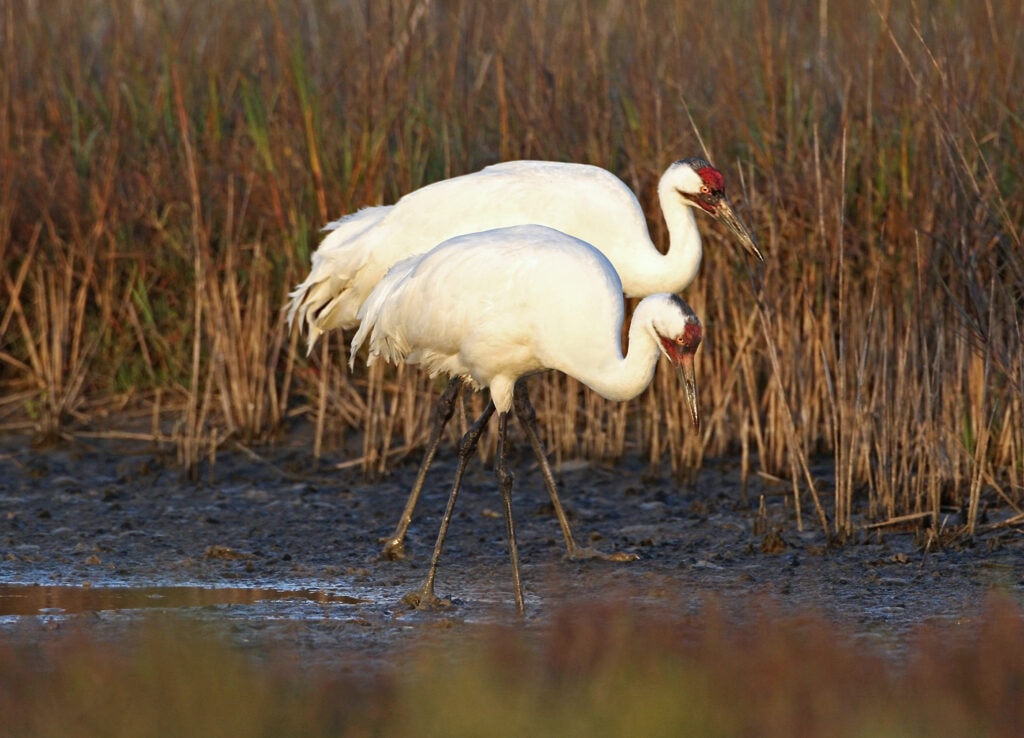The Whooping Crane cuts an impressive silhouette. It is the tallest bird in North America. Where these elegant giants loom largest, though, is in the minds and hearts of conservationists. They are one of North America’s rarest birds. In the 1940s, there were just twenty or so Whooping Cranes left in the entire world. Most of them were migrants who travelled between Canada and Texas. Some lived year round in Louisiana. The Louisiana population went extinct. It seemed, for a time, that the rest of the species would follow.
Related Article: UC Berkeley Study Examines Hummingbird Alcohol Consumption
The urgency never really went away. Even now, there is a tone of fear and precariousness when the Whooping Crane’s plight is discussed. But a lot has changed since the 40s. They were made an official endangered species in 1970 and from there, the long road to recovery began in earnest. Today, wild and captive Whooping Cranes number near 600 individuals. This is not enough to consider them safe or stable, but it is leaps and bounds ahead of the near-extinction they once faced.
Captivity is a vital part of the continuing success of this species. Of the wild populations that persist, many were captively bred in zoos or by conservation groups before being reintroduced to the wild. As important as wild populations are, the proliferation of captive Whooping Cranes is what has made them possible.
That’s why the excitement was palpable last week when the Dallas Zoo announced the successful hatching of their first ever Whooping Crane chick. The chick was hatched on June 10th, 2023 from an egg that was given to the zoo by the International Crane Foundation.
The chick is said to be thriving under the care of Huckleberry and Juniper, two Whooping Cranes who are acting as foster parents for the new chick at the Whooping Crane Center of Texas in Mesquite, Texas, about 15 miles out of Dallas. The center is not open to the public, meaning that the new chick and its foster parents have the privacy to grow and thrive away from the eyes of zoo visitors.
In a population as small as the Whooping Cranes’ every individual counts. Whooping Cranes mate for life and produce between one and three young each year after reaching sexual maturity. The oldest Whooping Cranes have lived well into their twenties, meaning that this new baby has the potential to help contribute dozens of cranes to the conservation of its species. For a bird that once stared down annihilation, this is a seed of hope.
Popular Article: The World’s Oldest African Penguin Has Died

